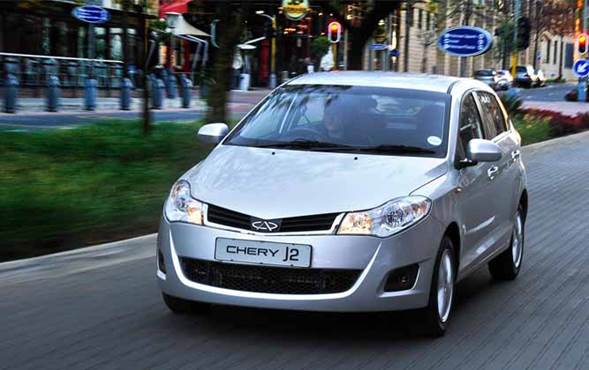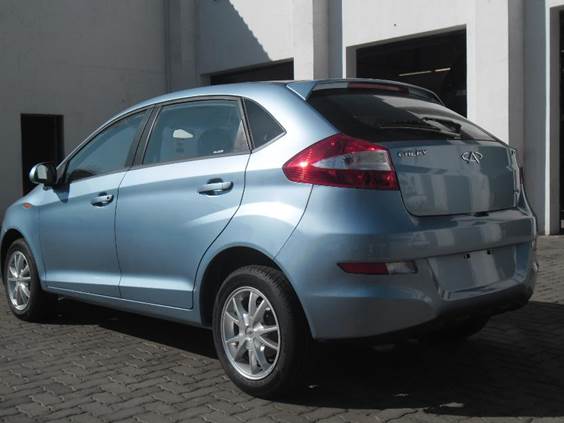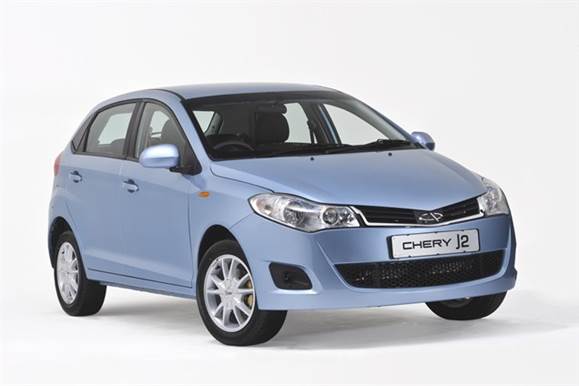Much rests on the shoulders of the new J2. Does it have the talent to survive in a cutthroat segment?
012 was a disappointing year for Chery SA,” said the company’s MD, Brett Soso, earlier this year at the South African launch of the J2 budget-B-segment hatchback. There are various factors that could be responsible for the brand’s 8% decline in market share compared with the corresponding period in 2011 (even as the South African car market grew), including a stagnant model range and various new additions to a fiercely competitive market.

But, with new models such as this one and the J3 (see our road test in the June 2013 issue), as well as updates to the QQ3 and Tiggo ranges, the company looks set to finish 2013 in a much better position than last year. Soso predicts that the J2 will become the carmaker’s bestselling model in our market and initial forecasts place monthly sales at between 100 and 200 units.
The J2 therefore has a massive task on its hand. Not only does it have to breathe new life into the Chinese carmaker’s local operations that initially was so successful in the passenger market following its entry in 2008 (mostly thanks to the QQ3, for many years – and still – South Africa’s cheapest new car), but it also enters one of the most hotly contested segments populated by such crowd pleasers as the Volkswagen Polo Vivo, Toyota Etios and Ford Figo. The J2 had to be damn good, or very cheap, to compete with these formidable players.
Unfortunately, it’s neither.
Let’s start with our main gripe: at R129 900, the J2 has almost no hope of convincing conservative buyers to spend their hard-earned rands on an unknown quantity when brands such as Volkswagen and Toyota are within reach. The J2 offers sufficient spec to somewhat justify the outlay, but no features that aren’t available on the Vivo and Etios. That said, we shouldn’t scoff at an audio system with USB (an ungainly cable system), air-con, electric windows front and rear and powered mirrors as standard.

These items are logically placed in a cabin that’s straightforward to use on the go … which is about where its virtues end. The design reminded some CAR testers of an early-1990s Korean vehicle’s, especially the precipitous facia and miniscule instruments, the smell wafting forth from every seam and panel gap will make grown men teary-eyed (or faint if the J2 is left in the sun too long) and the seats have seemingly been designed to keep chiropractors in business.

Thankfully, there’s enough space in which passengers can write about as they fall prey to those seats. In the second row, travelers have enough leg and cranium room, and utility space, at 1 000 dm3 on the dot, is class-leading.
Jump out of the vehicle to escape the odor and you’ll find a neat, inoffensively styled hatchback that has a larger footprint than most in this class, standard 15-inch alloy wheels, multi-element headlamps that give excellent illumination at night and a boot lid that lifts high to allow access to the large 240 dm3 luggage bay over a comparatively low loading lip.
Under the stubby bonnet nestles a 1,5-litre engine that delivers 72 kW at 6 000 r/min and 140 N.m at 4 500, figures that place it at the head of the class. Unfortunately, they don’t translate into sprightly performance when measured against the clock. Zero to 100 km/h takes a leisurely 14,25 seconds (the Etios manages it three seconds quicker) and overtaking acceleration is lackluster (see the March 2013 issue for a group test of the Vivo, Figo, Etios and Honda Brio for comparative purposes; they’re all faster between the gears, by the way).